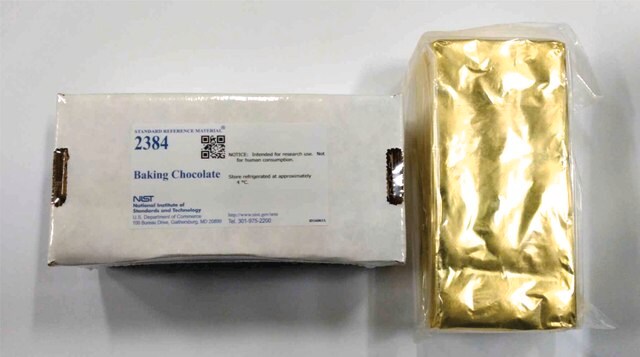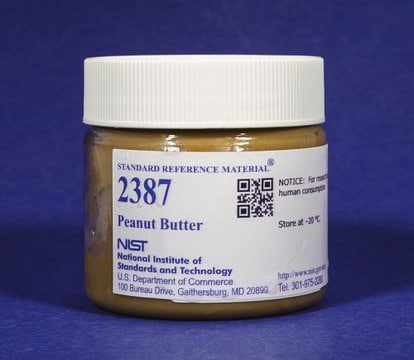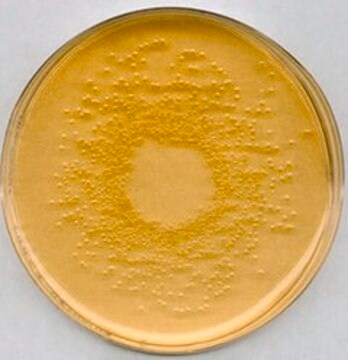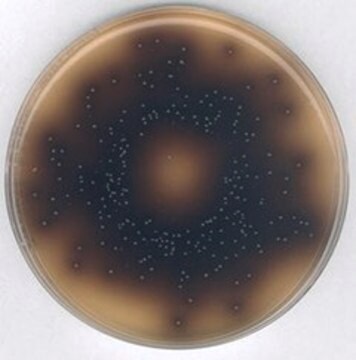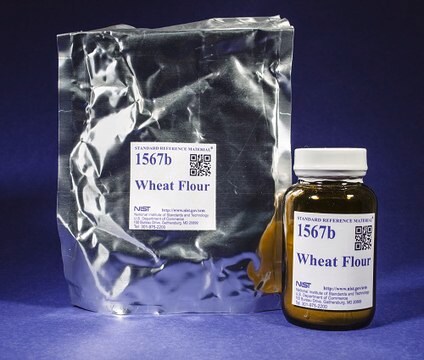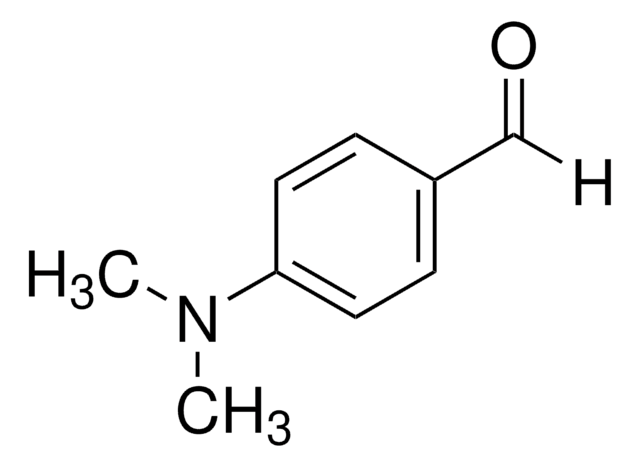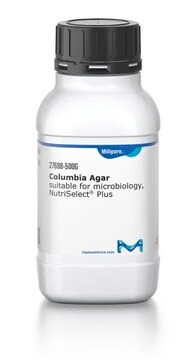Wichtige Dokumente
60787
Kligler-Agar
suitable for microbiology
Synonym(e):
Kligler Iron Agar
About This Item
Empfohlene Produkte
Sterilität
non-sterile
Qualitätsniveau
Form
powder
Haltbarkeit
limited shelf life, expiry date on the label
Zusammensetzung
agar, 12 g/L
casein peptone, 10 g/L
ferrous sulfate, 0.2 g/L
glucose, 1 g/L
lactose, 10 g/L
meat extract, 3 g/L
meat peptone, 10 g/L
phenol red, 0.025 g/L
sodium chloride, 5 g/L
sodium thiosulfate, 0.5 g/L
yeast extract, 3 g/L
pH-Endwert
7.4±0.2 (25 °C)
Anwendung(en)
environmental
food and beverages
microbiology
Eignung
nonselective and differential for Citrobacter spp.
nonselective and differential for Enterobacter spp.
nonselective and differential for Enterococcus spp.
nonselective and differential for Escherichia coli
nonselective and differential for Klebsiella spp.
nonselective and differential for Proteus spp.
nonselective and differential for Salmonella spp.
nonselective and differential for Shigella spp.
nonselective and differential for Yersinia spp.
nonselective and differential for coliforms
Anwendung
Lagerklassenschlüssel
11 - Combustible Solids
WGK
WGK 3
Flammpunkt (°F)
Not applicable
Flammpunkt (°C)
Not applicable
Persönliche Schutzausrüstung
Eyeshields, Gloves, type N95 (US)
Hier finden Sie alle aktuellen Versionen:
Analysenzertifikate (COA)
Die passende Version wird nicht angezeigt?
Wenn Sie eine bestimmte Version benötigen, können Sie anhand der Lot- oder Chargennummer nach einem spezifischen Zertifikat suchen.
Besitzen Sie dieses Produkt bereits?
In der Dokumentenbibliothek finden Sie die Dokumentation zu den Produkten, die Sie kürzlich erworben haben.
Kunden haben sich ebenfalls angesehen
Artikel
Salmonella contamination is the second leading cause of food-borne illness worldwide. Controlling outbreaks of Salmonella is an important task for food regulators, restaurants and the food industry in general. The Salmonella family includes over 2,300 serotypes of bacteria, but two types, Salmonella enteritidis and Salmonella typhimurium, are responsible for about half of all human infections. Most outbreaks of Salmonella are traced back to dairy, poultry and meat products, but Salmonella can grow on nearly any food. Chicken, eggs and their derivative products are particularly high risk.
Unser Team von Wissenschaftlern verfügt über Erfahrung in allen Forschungsbereichen einschließlich Life Science, Materialwissenschaften, chemischer Synthese, Chromatographie, Analytik und vielen mehr..
Setzen Sie sich mit dem technischen Dienst in Verbindung.
